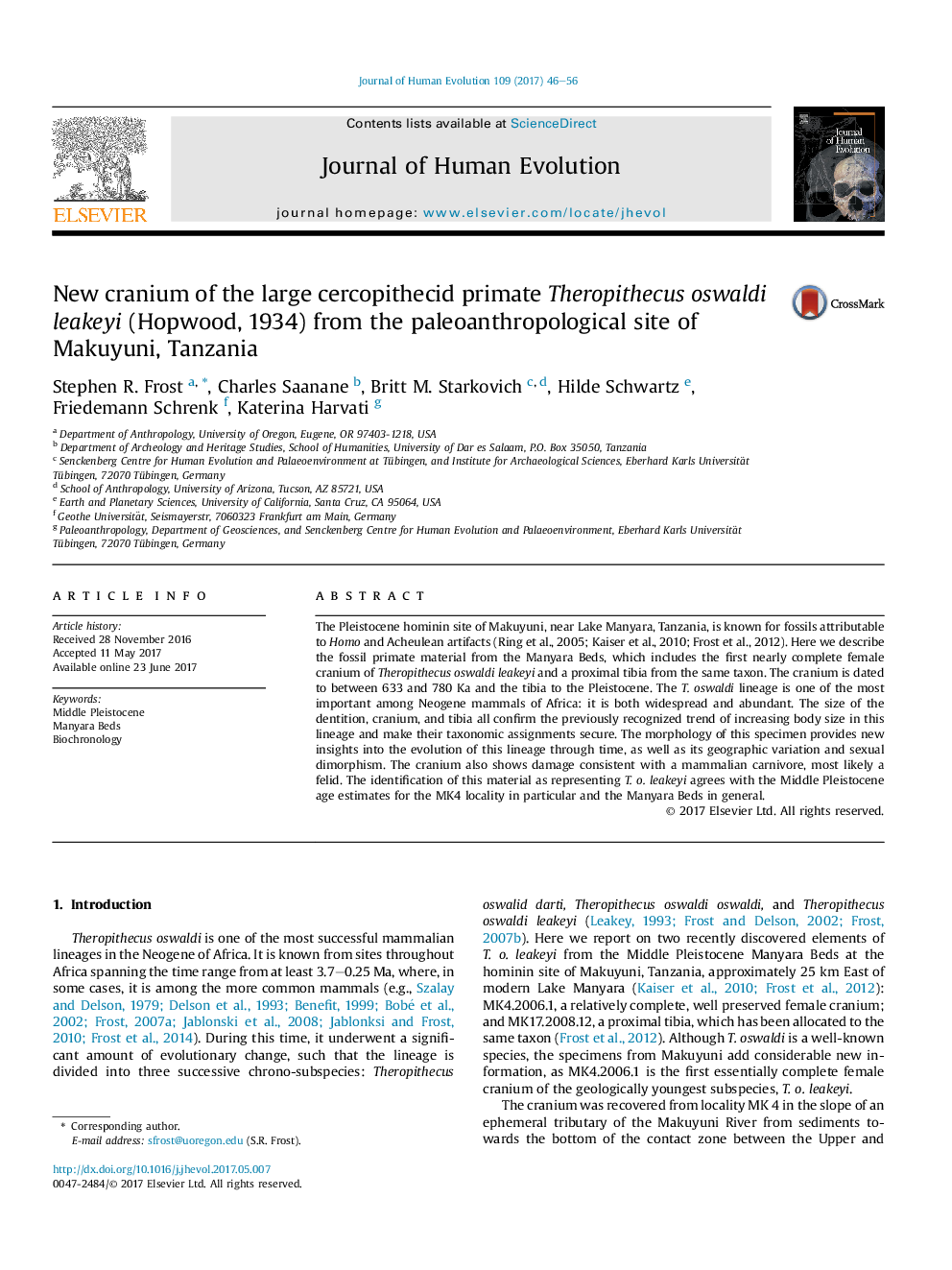| Article ID | Journal | Published Year | Pages | File Type |
|---|---|---|---|---|
| 5766898 | Journal of Human Evolution | 2017 | 11 Pages |
The Pleistocene hominin site of Makuyuni, near Lake Manyara, Tanzania, is known for fossils attributable to Homo and Acheulean artifacts (Ring et al., 2005; Kaiser et al., 2010; Frost et al., 2012). Here we describe the fossil primate material from the Manyara Beds, which includes the first nearly complete female cranium of Theropithecus oswaldi leakeyi and a proximal tibia from the same taxon. The cranium is dated to between 633 and 780 Ka and the tibia to the Pleistocene. The T. oswaldi lineage is one of the most important among Neogene mammals of Africa: it is both widespread and abundant. The size of the dentition, cranium, and tibia all confirm the previously recognized trend of increasing body size in this lineage and make their taxonomic assignments secure. The morphology of this specimen provides new insights into the evolution of this lineage through time, as well as its geographic variation and sexual dimorphism. The cranium also shows damage consistent with a mammalian carnivore, most likely a felid. The identification of this material as representing T. o. leakeyi agrees with the Middle Pleistocene age estimates for the MK4 locality in particular and the Manyara Beds in general.
